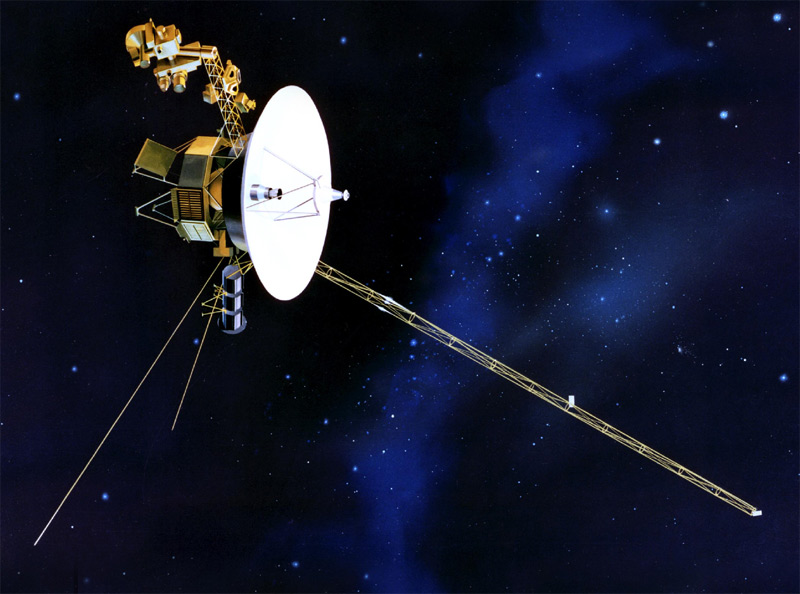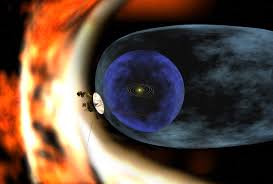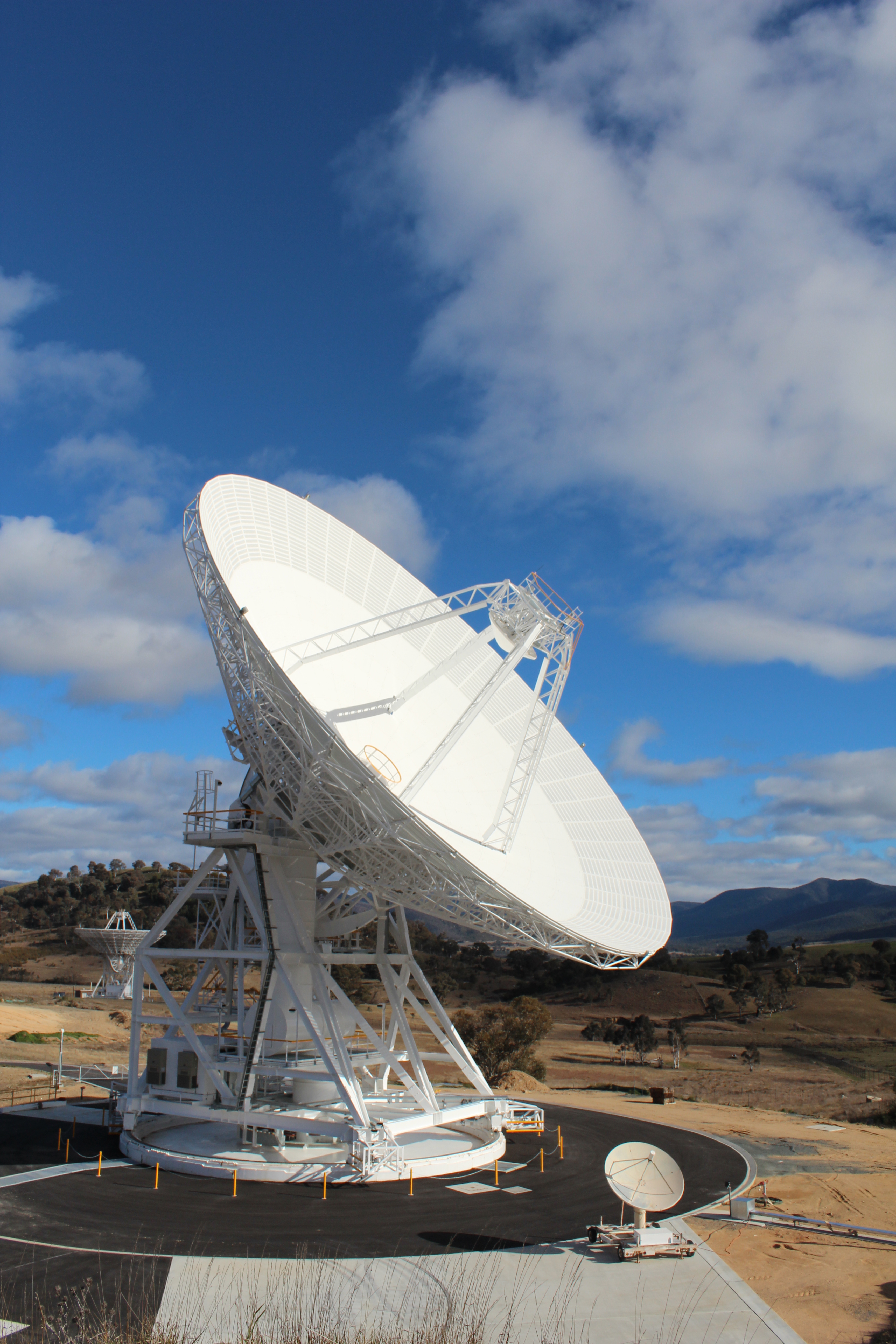Workshop - 2018-1-27 From Earth to Interstellar Space
Topic outline
-
-
This flyer is in a pdf form for easy printing and displaying
-
-
 This PowerPoint explains the Voyager Mission in terms of the development and the objectives, the triumphs, and the ongoing importance of a mission begun 40 years ago. A snapshot of The Golden Record. a is also included in this presentation, a type of 'message in a bottle' for intelligent beings found else wehre in interstellar space. The introduction sets the stage for the other activities in the "From Earth to Interstellar Space' Workshop.
This PowerPoint explains the Voyager Mission in terms of the development and the objectives, the triumphs, and the ongoing importance of a mission begun 40 years ago. A snapshot of The Golden Record. a is also included in this presentation, a type of 'message in a bottle' for intelligent beings found else wehre in interstellar space. The introduction sets the stage for the other activities in the "From Earth to Interstellar Space' Workshop.-
The planetary configuration allowed the Voyager to gain speed and shortened its voyage to the edge of interstellar space. This is a simple mathematical explanation of just how those slingshots helped the Voyagers!
-
These plans were created by John Jogerst and are permitted for personal or educational use only. Not for commercial use.
The scale is 1:48 and best to be printed on cardstock.
-
-
 The Voyager spacecrafts have travelled astronomical distance, a concept often hard to imagine. With this 2-D model, students can begin to grasp the incredible accomplishments of a spacecraft launched with 1977 technology and which has now sailed into interstellar space.
The Voyager spacecrafts have travelled astronomical distance, a concept often hard to imagine. With this 2-D model, students can begin to grasp the incredible accomplishments of a spacecraft launched with 1977 technology and which has now sailed into interstellar space.
Information on the heliopause and termination points fo the heliosphere add to the interest of this model.-
This PowerPoint has notes that may prove useful when using it.
-
This activity, with distances measured in AU (Astronomical Units) will impress participants with the great distance the Voyager spacecraft have traveled in interstellar space.
-
Voyager 1 transmitted sounds to the Deep Space Network from Interstellar Space. The video shows the occurrence and the sounds that were transmitted.
-
The heliosphere is the bubble-like region of space dominated by the Sun, which extends far beyond the orbit of Pluto. This video demonstrates the direction and speed of particles in the heliosphere.
-
The most recent information from Voyager 1 and 2 suggest Voyager 2 is encountering 'bubble-type' energy formations at the edge of the heliopause
-
This example includes the sun, planets, termination point , heliosheath, helioshpere, and magnetic bubble region, information reported by Voyager 1.
-
-
This exercise givesgives students and teachers a mathematical model of how the Deep Space Network antennas work and how the antennas concentrate electromagnetic radio waves in a single direction. The lab involves testing different sized sound receivers to understand the importance of the size of the receivers on the antennae of the Deep Space Network.
-
Participants determine mathematical and scientific principles that affect the results of this lab.
-
Updated standards are found in this document.
-

The tiny spacecraft we have sent to explore our solar system “phone home” across millions of miles of space using only about as much electricity as the light bulb in your refrigerator! How do they do it?
This activity is fun and you will create rhythms to decode information!
-
The Golden Record was a compilation of approximate 120 images, 50 greetings in spoken languages, and about 90 minutes of music as a message of the civilizations on Earth in 1977 sent into interstellar space for intelligent life found elsewhere. The bulding of the record is discussed to prepare participants for an activity in determining the best representations that would go on a Golden Record of today for intelligent life to discover perhaps billions of years in the future, after our world ceases to exist.
-
Tim Blais in a physicist from Canada who did a capella stuff while in
school. He had a video on string theory (Bohemian Gravity) go viral about
when he finished his masters, and so started working on amazing
science education / A Capella music cover songs. The song is a parody of the Aladdin movie title song, "A Whole New World" and sings about findings of exoplanets since they were first detected n 1990. This 8.5 min video has a lot of information on exoplanets - would they harbor civilizations of intelligent life?
-
-
How can we estimate the number of technological civilizations that might exist among the stars? While working as a radio astronomer at the National Radio Astronomy Observatory in Green Bank, West Virginia, Dr. Frank Drake conceived an approach to bound the terms involved in estimating the number of technological civilizations that may exist in our galaxy. The Drake Equation, as it has become known, was first presented by Drake in 1961 and identifies specific factors thought to play a role in the development of such civilizations. Although there is no unique solution to this equation, it is a generally accepted tool used by the scientific community to examine these factors.
-
This presentation provides background information on the Drake and Saeger mathematical approaches for estimating the occurrence of life outside Earth.
-
This exercise involves using two mathematical models to estimate the possibility of life outside Earth. One model was developed by Frank Drake in 1961 and his estimates for intelligent life form occurrence. Sarah Saeger has modified the equation to consider the presence of any life forms on exoplanets. Try the two methods and see where the numbers lead you!
-
This 21 minute video presents some interesting information to ponder.
-
-
The Workshop has been filled with several space topics and information about Enterprise In Space.
After you've had some time to process the information, we encourage you to contact us with
comments, ideas, and any questions you might have.
Click to share - EIS Comment Form
Here are emails for the presenters:
Fances Dellutri francesdellutri@gmail.com
Kathy Gustavson kgustavson51
@gmail.com
